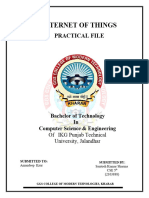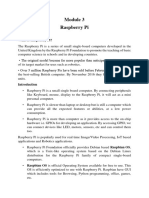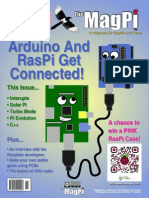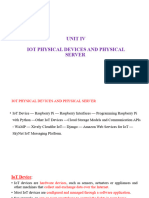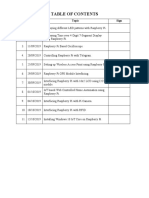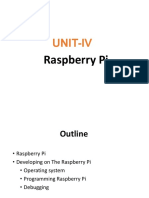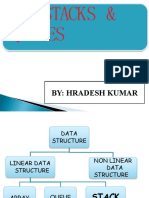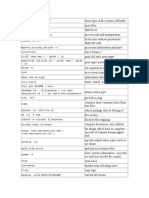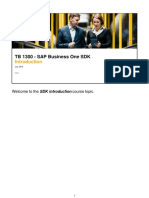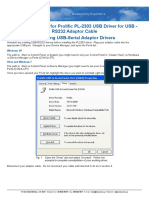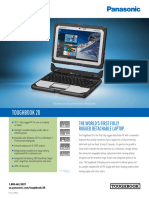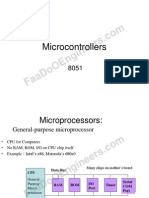0% found this document useful (0 votes)
53 views54 pagesInternet of Things and Raspberry Pi
The document provides an overview of the Internet of Things (IoT) and the Raspberry Pi, highlighting their integration for data acquisition and sensor applications. It covers programming with Python and MATLAB, various digital sensor interfaces, and cloud services like MongoDB and ThingSpeak. Additionally, it discusses the use of communication protocols such as MQTT and the importance of cybersecurity in IoT implementations.
Copyright
© © All Rights Reserved
We take content rights seriously. If you suspect this is your content, claim it here.
Available Formats
Download as PPTX, PDF, TXT or read online on Scribd
0% found this document useful (0 votes)
53 views54 pagesInternet of Things and Raspberry Pi
The document provides an overview of the Internet of Things (IoT) and the Raspberry Pi, highlighting their integration for data acquisition and sensor applications. It covers programming with Python and MATLAB, various digital sensor interfaces, and cloud services like MongoDB and ThingSpeak. Additionally, it discusses the use of communication protocols such as MQTT and the importance of cybersecurity in IoT implementations.
Copyright
© © All Rights Reserved
We take content rights seriously. If you suspect this is your content, claim it here.
Available Formats
Download as PPTX, PDF, TXT or read online on Scribd
/ 54















